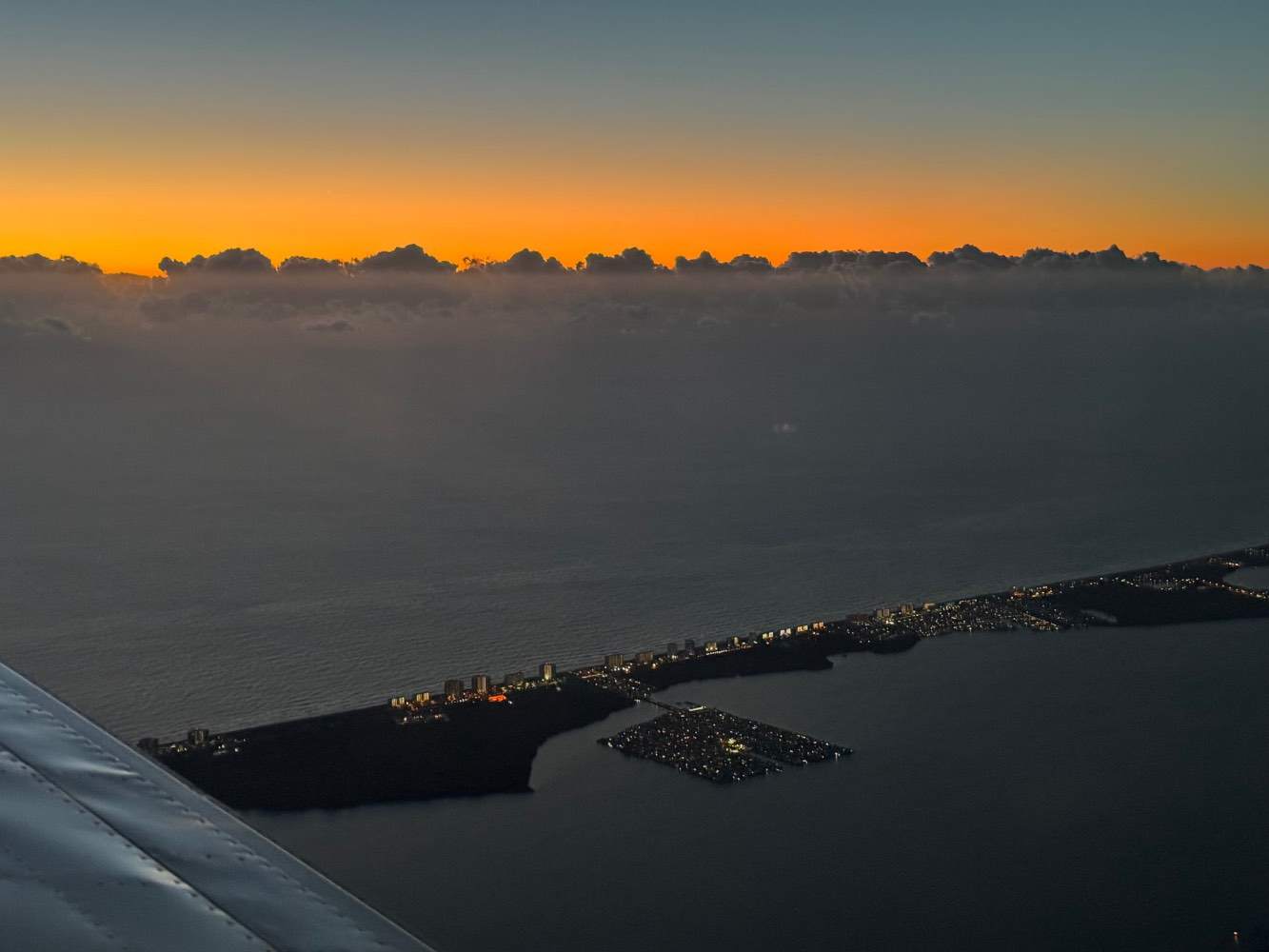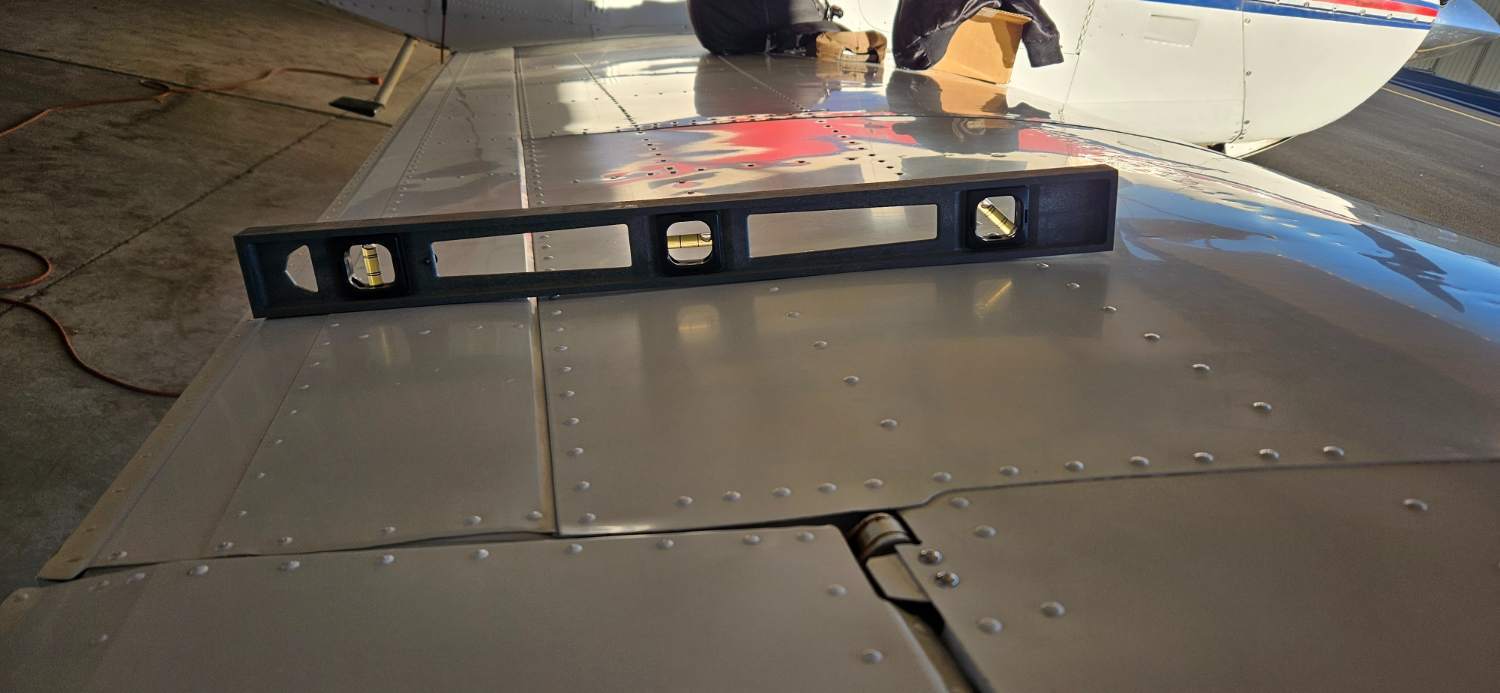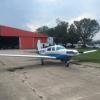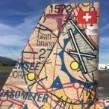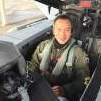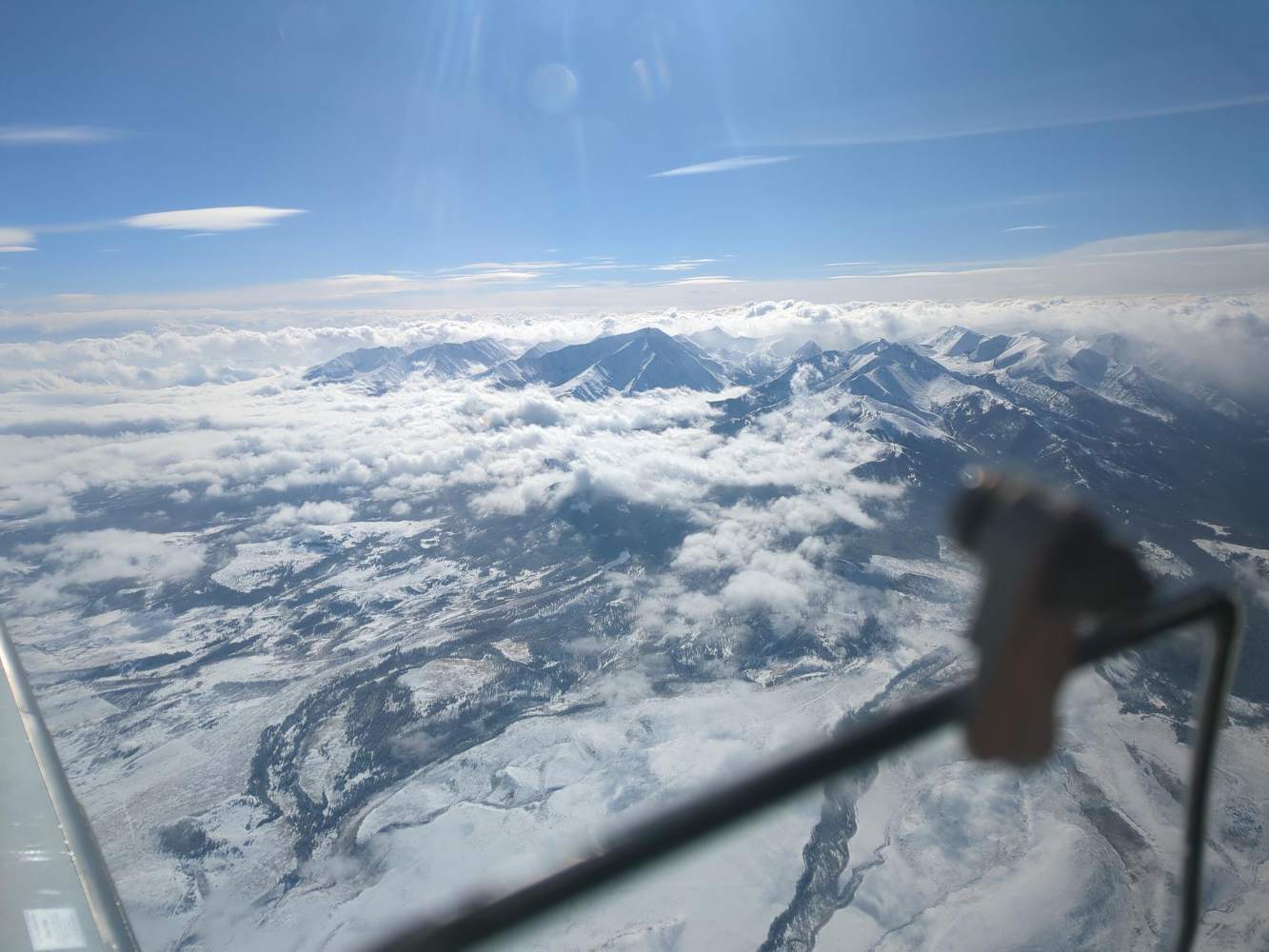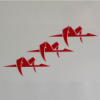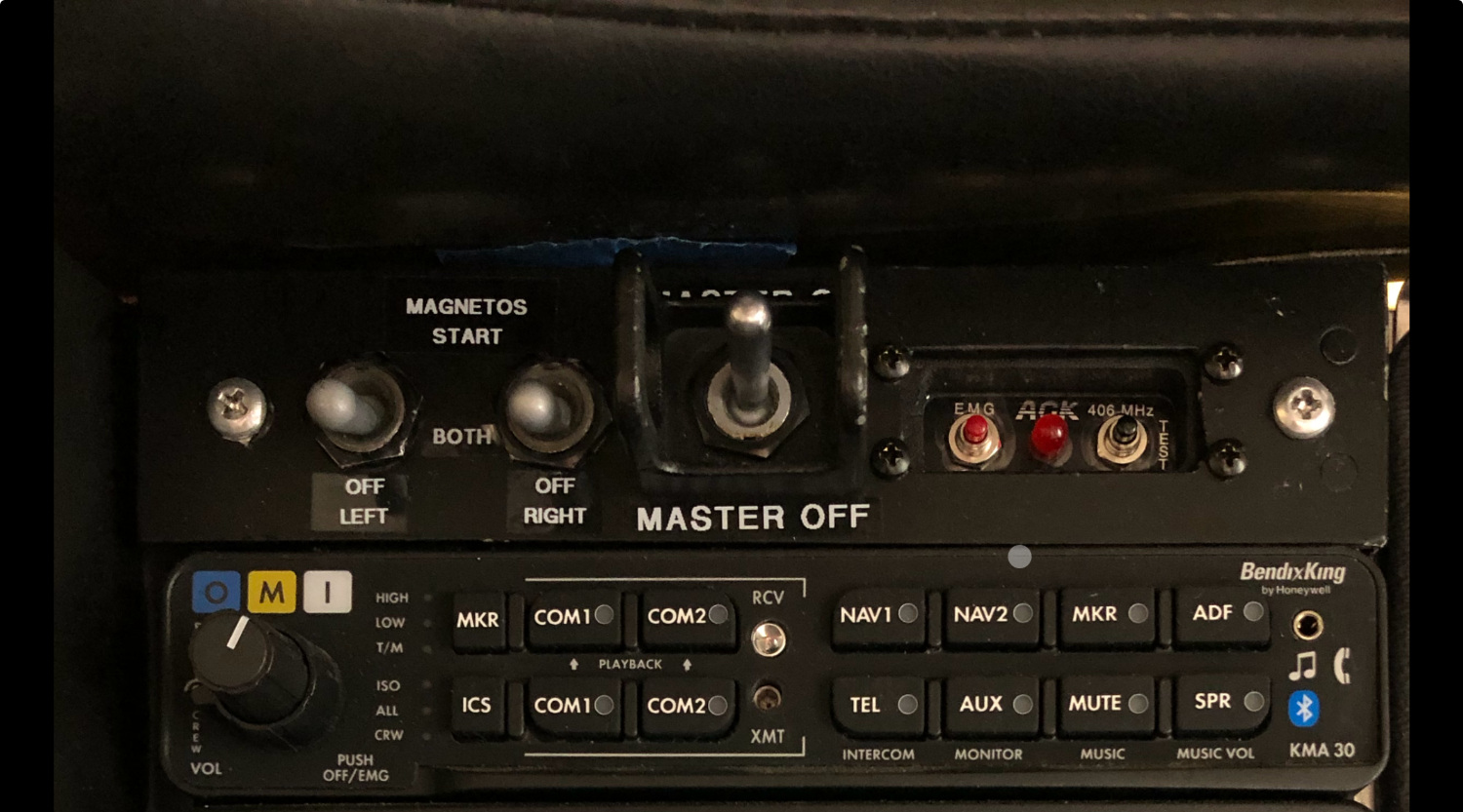Leaderboard
Popular Content
Showing content with the highest reputation on 03/31/2024 in all areas
-
6 points
-
I let everyone make their own decision, but, I personally, deliberately do not lock mine for the reason stated above. Some people insist on locking it and I'm fine with that, just not for me. A properly latched baggage door being held down with the two latching pins is not going to come open.4 points
-
3 points
-
First, get on the hangar lists as soon as possible. The wait isn't nearly as long as they quote you. If a hangar comes up every month and there are 60 people in front of you on the list, they'll tell you it's a five year wait. In reality, when each hangar comes open, most of the people on the list either won't have an airplane or aren't ready to buy on right then, so they go to the next person on the list. When I got my hangar, everywhere around here said there was a 5-10 year wait list. Turned out it was a year and six months before my name came up due to all the people who passed. Second, if you really think you will wait a long time for a hangar, I think you'd be better off looking for something older than a J. You'll lose a lot less value leaving an "cheaper" older plane out on the ramp than you will a newer, more expensive, one. Third, do you think you'll still own this plane when the kids are teenagers? The kids and all your luggage are going to fit just fine in any Mooney right now, but they'll grow. If you still own this plane in 15 years, you'll be glad you got the longer model (G, F, or J). Last, and most importantly, find a the best maintained plane that is equipped with the avionics you want/need for the type of flying you will do. It's a good bet that one flying reguarly (100 hrs/yr) will be in a lot better condition mechanically than one that is rarely flying. Any of these planes will meet your needs (unless you plan on flying in icing conditions). There is far more difference between individual planes (equipment, condition, maintenance, etc.) than there is between different models. Happy hunting and let us know what you end up with!2 points
-
Quick update. Removed the fuel pump and replaced with a new pump. Fuel pressures are back to normal. No other issues could be found so I elected to replace the fuel pump. Can these be rebuilt so I have a spare or is it better just to buy new if I need another in the future?2 points
-
Yes, the fold is "easy" to fix. I reached in from the front intake with my hand and was able to pull the top back forward so I guess it is too short?2 points
-
It looks like you have a fastener holding the two pieces of gasket together right where they're folding down. Take that fastener out and they'll be able to slide across each other and seal that hole.2 points
-
There is so much more to proper transition training than just learning to land a Mooney or pounding out 10 hrs for insurance requirements. A new owner needs to be advised of best practices, Care, and all systems as well as how to yank and bank. While not saying a popped open baggage door in flight caused this or a result of baggage door ignorance ( the NTSB gets to suggest cause) a popped open baggage door is preventable and Is a distraction at best.2 points
-
@Flyler Personally, when I was shopping I would have walked from this one. Like mmcdaniel's wife, the paint would have been a 'no go' for my wife, too (New paint is $15K and up) If the missing logs were far enough back (over 20 years) that probably wouldn't have been a show stopper. Fixing the bent nose gear is going to be pricey! You need to get a solid estimate on that cost BEFORE you proceed; especially if the seller is going to further discount. But, the MAIN reason I would walk is the THREE YEARS not flying.2 points
-
Another simple, rough-ish starting point to check flap rigging is just to put a straight edge down the top of the wing. The upper surface of the flap should align reasonably well with the back portion of the wing surface. That'll give you an idea if something is significantly off, and be able to compare the two sides. This works anywhere along the wing, but obviously isn't a precision measurement.2 points
-
@201er (Mike) may not sue, but the parrots may decide to. Free speech applies to humans, the parrots may want to get paid for their speech. They need seed money for a new venture.2 points
-
While it's running on the ground the first thing I'd do is start pulling one breaker at a time to see which breaker makes it stop.1 point
-
I dd not know the status of the insurance other than the insurer knew the original owner had died and it was owned by his estate. The insurance was in effect still. The concept was that since it had not been flown for 3 years and was only moved by the on field shop that perhaps they would cover it. Who know??1 point
-
Parker has quite a few years under his belt and is a Mooniac at his core. Very helpful supporting MSers with their insurance questions and needs. Best regards, -a-1 point
-
1 point
-
While a turbo would certainly increase your options, don't rule out the vintage Mooneys. Even my little C meets your requirements--useful load is 970 lbs, full fuel of 300 lbs is good for 5-1/2 hours or more (full fuel is me plus 470 lbs). But back seat leg room is limited, and the F has larger baggage space. My C will outclimb and outfly 172s and Archers, and use less fuel doing it. I've kept an F in sight, landing about 10 minutes behind him (the F took off first, too), on a flight just over an hour. E models should be similar, but with slightly higher fuel burn when not LOP. Few carbureted planes will go LOP well. Caution about the G: while it has the same engine as my C, and is in the larger F fuselage, the max gross is strangely limited to 2525 (I think, it may be lower) compared to the 2575 in my C.1 point
-
+1 on that ^^^ I think my exhaust is the original from 1977, and the flame tube has eroded awary entirely. There's essentially nothing left. The only inspection criteria for it is that there isn't a chunk blocking the outlet. Otherwise the only required inspection criteria for the muffler is that it doesn't leak. My hangar neighbors say my airplane sounds cool, so that's a plus.1 point
-
If the only issue is the flame tubes, I would discuss it with your IA before spending a lot to have the muffler repaired. Mine were pretty much gone about 400 hours after a rebuild. My very experienced IA says that he sees that all the time and doesn't consider it an airworthiness issue unless they fail in such a way that blocks the exhaust. Usually small pieces break off and go out the exhaust. Any larger loose pieces that remain inside the muffler should be removed.1 point
-
This prop comparison topic seems to come up over and over again and I don't think I've ever seen an engineering or test report with any actual data. That would be interesting. I'd like to see the two blade Hartzell vs three blade McCauley comparison with data. I would prefer climb performance over a few knots extra speed as long as it's still as smooth.1 point
-
I find the Sirius XM lightning product to be superior to my old stormscope, but mine was not the latest version (had green screen with black dots). This is from the Sirius xm site: “The Lightning feature contains the latitude and longitude of both cloud-to-cloud and cloud-to-ground lightning strikes detected over North America, including the Atlantic and Pacific coasts. It is updated every 2.5 minutes. SiriusXM has recently upgraded its lightning provider to the most accurate and reliable large-scale lightning detection network in the world. Improvements to the lightning service include: 40% cloud-to-cloud lightning detection improvement, 20% lightning strike location accuracy improvement, 5% cloud-to-ground lightning detection improvement” while there is some latency, I’m not getting *that* close to a buildup. I believe these ground-based strike detection systems triangulate rather than estimate for location, which should be better. -dan1 point
-
I am in Spokane and have 2 small (8 year olds) as well. I have an F which is great for us. If I was you, I’d probably stick with an F or a J. Several reasons… in Utah, no reason to mess with ice because it’s generally clear outside of storms and you’re not flying in them anyway. Also, kids grow. You’re gonna need useful load and tks is (relatively) heavy. If you want a newer plane, eagle/ovation both have good ul. I find non turbo aircraft just fine out west, just fly in the morning which you probably want to do anyway. Everyone will have an opinion here of course. Sure, a pressurized, twin turboprop would be great, but … Also insurance is gonna be expensive for a new pilot so check that out with parker.1 point
-
In the ideal Mooney world where nothing ever wears out, or misbehaves… circuit breakers only popped when needed… people didn’t use them as switches to cut the power off… in the real world… we want two ways to turn some things off…. AP servos especially. fortunately… the push button CBs can be exchanged for the desired type ‘relatively’ easily…. PP thoughts as usual… not a mechanic… Best regards, -a-1 point
-
They didn't have a kit for the M20M, but even if they had, I wouldn't have bought the "kit" from SoundEx since they ask way too much for what you get. The 3/4" material I bought from Aircraft Spruce works in every area. It can be cut slightly larger, maybe 1/4" larger than the opening, and be press-fitted in between the tubes. I used small pieces of the tape on most of the pieces to secure them, but to still allow them to be removed for inspections.1 point
-
I agree with the shopping insurance to get an idea first. Are you really wanting to flirt with ice with your family? I would love to have TKS, but I also can live without it and NOT mess with ice. I am biased, but I think the 252/Encore is the ultimate Mooney. A very nice balance of range, fuel flow, performance. If you want to chat about it, let me know.1 point
-
Welcome to the beginning of the journey. Lots of parameters to consider. Based on my limited life experience airplanes that are not operated for profit are best bought for cash. If things go south they can be converted back to cash to add fuel to a business. Typically another 20-30% of the purchase price of a well maintained aircraft is spent on repairs and upgrades in the first two years. A plethora of knowledge can be derived from talking to people that maintain and overhaul the birds, dealers and owners. This process can take a couple of months to a year. Studying for sale ads and logbook also gives you valuable insights. When I was airplane shopping 7 years ago I was looking at Encores and Bravos, both with TKS. The Encore has the best overall airframe balance. After in depth discussions with engine shops I bought the Bravo which is a tad nose heavy. The process took about two years while flying a 182RG in a partnership, accumulating the budget, analyzing dozens of logbook, two pre purchase inspections and test flights to buy one aircraft. Take your time to figure out what you want and the buy the best aircraft that you can afford.1 point
-
There are at least a couple threads here on fairly easy ways to add an inside latch to the older doors. Here's a recent one if there's interest:1 point
-
1 point
-
It's a pretty big debate and when I first got my Mooney I was taught to lock it. But as time went on and I read more and when to seminars, including PPPs, it started to emerge that the people that had a Baggage Door open in flight either admitted they probably didn't latch it properly or they were not sure if they latched it properly. And the number of Baggage Doors opening in flight seems to be VERY small. So there does not seem to be a reason to lock it. On the other side for NOT locking it is the "what if" you go down and are knocked out and the main door is blocked or jammed. If it happens to be a real 1st Responder, they probably have something to pry open the door or go through a window. But more times than not, the first person there is probably some living or driving by. Their only option might be the Baggage Door, but NOT if it's locked. NOTE: There are times when the Baggage Door latching mechanism actually breaks and both pins do not extend into the door frame. But that is easily discovered by the appropriate TUG on the Baggage Door. And locking won't really help if the pins did not fully extend. I learned this the hard way back when I was locking the door. (But no serious damage. Kept the speed down as I came around the pattern. Those hinges are pretty strong.)1 point
-
Glad to hear you've had a, i.e. one, good experience...I believe Philiplane's experience was with "more than a DOZEN MT propellers." So, when it comes time for a new prop, I'm going to consider the more than one experience and stick with the 2 blade all-metal Hartzell1 point
-
Be very, very careful with any 'cheap' airplane! It likely will be anything but, in the long run (more probably even in the short run!) I'm very happy with my F but have only filled all the seats once in over 6 years of ownership; make sure you are realistic with your family situation and how often that is going to happen (and, you'll be in the front so you won't suffer, anyway) An E is a bit faster. Don't turn down a good E when shopping unless you are really convinced you have to have an F. Finally, while unlikely if you buy one that has seen recent continuous use, be sure you can handle an engine overhaul ($30K-$40K). So, if your purchasing budget is $85K-$90K, just be sure you can deal with the disaster of an OH. I've seen too many ramp rats that I wonder if the owner couldn't afford a sudden large expense and the plane just sits.1 point
-
I just got a fantastic quote after talking with Parker this week. I'm paying $2,300 and the only requirement was 2 hours in made and model (J model, not M20P) with an instructor. I only had 55 hours retract and 355 total. When quotes were coming in higher, I was going to just bind with Avemco and re-quote after 3 month. Talk to a pro; I'd recommend Parker based on his reputation and my dealings with him.1 point
-
I did. We did a basic prebuy. No showstoppers on the 2 hour inspection. We did find two screws into the main spar done by the folks who redid the interior. My A&P (experienced Mooney CFI and A&P) was not sure if that was an airworthiness item or not, but was concerned. The nose gear had been turned too sharply and was "significantly" damaged. I would be glad to send you his full report. All in all, a nice plane. For me though, was the fact that it has not flown in 3 years, is missing 20+ years of logs and the paint was significantly more sun damaged than I thought. The plane will fly with bad paint, but my wife WON'T!!! Jerry and family are exceedingly nice folks, but not airplane people. There were unwilling to further discount their already lowered price further.. I did not know about the missing logs until the day before I went up there. All in all, two many question marks and the paint lost my much preferred spousal support for a Mooney. Like I said, send me an email and I'll send you the report they A&P did. mmcdaniel33@gmail.com1 point
-
Now that I think about it, he probably meant $200-300 per hour, giving $20-30K per year, assuming 100h of flight/year...1 point
-
I can't be of much help since I don't have any experience with that configuration. You might post on BeechTalk as there are a number of very knowledgeable contributors there (especially Terry Markovich) that have a lot of experience with Garmin equipment. You could also try Garmin Field Service Engineering - I believe their number is 888-606-5482. Also, since the G5 is designed by the Team-X experimental avionics group, you might try calling experimental support at 866-854-8433. Good luck Skip1 point
-
1 point
-
Got mine last year, have logged 90 hrs since and now my premium just went up 600 a year. Not sure why cause it’s supposed to go down after the first year …1 point
-
Just buy the plane then get your transition training. Whatever money you spend on renting will be far more than insurance savings (if any)1 point
-
Next time you’re at your plane, try thumbing the hatch (closed but unlocked) with your fist. I see the handle start to open up (1/4” or so) but then stop. Kinda makes me wonder if it could open up in turbulence, so I lock it close when on long flights.1 point
-
1 point
-
Add to that… they may well have had a full bag of gas, which is way cheaper at St. Augustine than at Homestead. Speaking only for myself…. I seldom land at max landing weight and NEVER at 3368 MTOW. Stall speed really goes up at heavy weight and high bank angle. 57 KIAS at a normal wings-level 3000# landing vs 72/85 @ 45/60* bank and MTOW. AOA warning, if installed, would have been screaming if this is what happened. -dan1 point
-
Don’t make me angry Drew, you wouldn’t like me when I’m angry…1 point
-
It seems like it’s solid metal 1” open with no hinge at cruise speed. I had 3 hours to play with it. You can neither open it or close it, although I only had my interior pull strap to pull on, so I don’t think I pulled so hard that id separate that from the door panel.1 point
-
1 point
-
I didn’t have room for the rocker switch ignition panel, so I installed two DPDT mil-spec toggle switches. I put them on top of the radio stack, where nothing else fits. I moved the ship’s Master switch and the ELT panel there, too. I adopted a mag switch schematic I found on a RV’r website. Both mag switches in the ‘up’ position grounds the right mag and energizes the starter solenoid. The left mag (SureFly) is hot. When the engine starts release the switches, they’re spring loaded back to ‘center’ and both mags are hot. Inflight mag checks are a piece of cake. No more after-fire from not moving the key quickly enough with SureFly latency on the left mag. Shut down is normal… pull the mixture, when the engine stops both switches in the ‘down’ position grounds both mags. After shutdown, I do have to double/triple check that the mags are cold, both switches down. But, there’s virtually no chance of inadvertent starter actuation because both toggle switches have to be ‘up’ to complete the starter circuit.1 point
-
There are a few components to what we generally refer to as an annual inspection: 1. Disassembly and reassembly of inspection covers, cowlings, etc. necessary to gain access for the inspection. 2. Servicing (mostly lubrication) that isn't really part of the inspection but is done during the inspection because the airplane is opened up. 3. Checking AD status. 4. The actual inspection. 5. Repairing any discrepancies found during the inspection or requested by the owner. 6. Completing logbook entries. I try to avoid deferring maintenance until the inspection. I keep the AD list up to date so that the IA only has to review it and check it against the service he subscribes to. I do all the disassembly, reassembly and servicing. My IA charges me a flat $750 to perform the actual inspection, check the ADs and make the logbook entries. The point is that the cost is highly dependent on how you manage it. At one end of the spectrum is not deferring any maintenance and doing most of the work yourself. That's pretty inexpensive. At the other end is dropping off the plane with a squawk list. Depending on the squawks, that can take a long time and be alarmingly expensive. Keep in mind that the first annual on a new airplane is likely to find issues that didn't show up on a pre-purchase inspection. If you drop off an airplane in good shape with no squawks and don't do any work yourself, I would think the $2500 to $3500 range sounds reasonable.1 point
-
$2500-$3500 in my experience. There are large differences in what different IAs decide to inspect. Obviously there are regulations and a Mooney specific guide but there’s still a lot of differences.1 point
-
Sometime, for practice, climb from the pilots seat and use the baggage door exit to get out. Now, imagine doing this with possibly a broken clavicle, a few broken ribs and a big gash in your head. Plan B would be to make sure you prop open the door if you are landing anyplace but a runway.1 point
-
1 point
-
Update: I had the prop dynamically balanced Monday and found it was off quite a bit. When the prop was overhauled they had installed too much weight on one side and the instrument would tell us to put weight on the opposing side, obviously to offset the difference. We couldn't see the existing weights until after removing the spinner so had to go back and redo it. Finished with it at .03 IPS. Thanks everyone1 point
-
Call Guy Ginby at Gee-Bee Products 800-556-3160 http://www.n252q.com/2007/09/baffled-about-baffling.html1 point







